Recent Articles
Popular Makes
Body Types
2015 Ford Mustang Road Test and Review
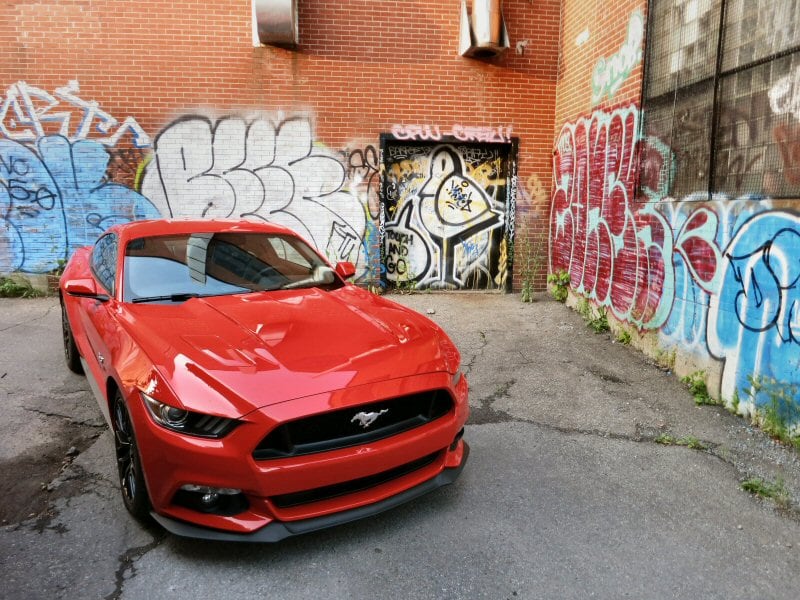
2015 Ford Mustang GT front 3/4 top ・ Photo by Benjamin Hunting
It's hard to think of a more anticipated 2015 redesign than the Ford Mustang. Already an icon for its ability to consistently pair respectable performance and affordable pricing for going on 50 years, Ford also chose 2015 to implement a host of technological, drivetrain, and platform upgrades to the Mustang, finally bringing it fully into the 21st century and silencing critics who had long derided the more antiquated aspects of its package.
There's certainly very little about the 2015 Ford Mustang that feels like it belongs to days gone by, with the sole exception of the undisputed attitude on display by the range-topping Mustang GT's standard V-8 engine. Joined by a new turbocharged drivetrain plus a surprising list of advanced features, it's hard to think of a time when Ford has offered such a versatile entry-level performance car option. I spent a week behind the wheel of the 2015 Ford Mustang GT and came away impressed by how little has been lost of the original car's character in massaging its bad-ass brawn to better meet modern-day standards.
The 2015 Ford Mustang Looks Bigger, Is Bigger, And Weighs More, Too
One of the first things that struck me about the 2015 Ford Mustang - regardless of the trim level - is just how massive it seems, an impression that was underscored by parking it beside an early-90s Fox body Mustang coupe while out on the town one evening. The aggressive styling of the newly-redesigned Mustang isn't quite as bulky to look at as, say, its Dodge Challenger rival but it's very much in your face, particularly from the front of the vehicle, which only inflates its image in your mind's eye.
The tale of the tape shows that the 2015 Mustang is actually 1.5-inches lower than the model it replaces, with a 1.5-inch increase in overall width. The wheelbase is the same, as is the overall length, but when seen from the back you really notice the car's thicker haunches, which are separated from the coupe's torso like a wasp and which cover a rear track that's grown by three inches.
The GT edition of the Mustang - which is the model I drove - has also seen its curb weight swell to roughly 3,700 lbs for 2015. In fact, due to a number of design changes (including the installation of an independent rear suspension system), the Ford Mustang now weighs in between 20 and 80 lbs heavier than it did for 2014, depending on which version of the pony car you choose to order. It's a noticeable increase from behind the wheel, as the coupe doesn't feel quite as tossable as it once did, imparting more of a grand touring than a sporty feel when out on the road.

Photo by Benjamin Hunting
The 2015 Ford Mustang Gains An Independent Rear Suspension System
Yes, that's right: the 2015 Ford Mustang has abandoned the live-axle setup that has defined its on-road personality for so many decades and fully embraced a suspension design that…well almost every car on the road cottoned to a couple of decades ago. (Before you send any irate emails: yes, I know you could get an IRS with the SN95 Cobra in the 90s, so technically the 2015 model isn't the first independently-sprung Mustang. But this is the first generation to see the change implemented across the board).
Late to the game or not, it's worth noting that the new Mustang is much more comfortable to drive over rough roads than it ever has been before, demonstrating none of the nervousness that was very much present in past editions of the coupe (and convertible). That being said, I'm not quite sure the IRS has pushed the Mustang's performance envelope quite as far as it might have. The 2014 edition's live-axle tuning was so good that as long as you planned for the occasional mid-corner upset and did as much of your braking as you could in a straight line, the GT was actually a lot of fun on the race track - to say nothing of the Boss 302 special edition that we were gifted with for two years of production.
Although the new independent setup excels in day-to-day driving, and improves stability at speed, on a drag strip the Mustang GT seemed confused as to how best to harness its V-8 power and launch itself off of the line. This was particularly true when I tried using the GT's new standard launch control system, which actually yielded slower times than slipping the clutch myself (my best was a 13.1 @ 109 mph, a time which given the power and weight of the car should have skewed towards a sub-12-second pass).
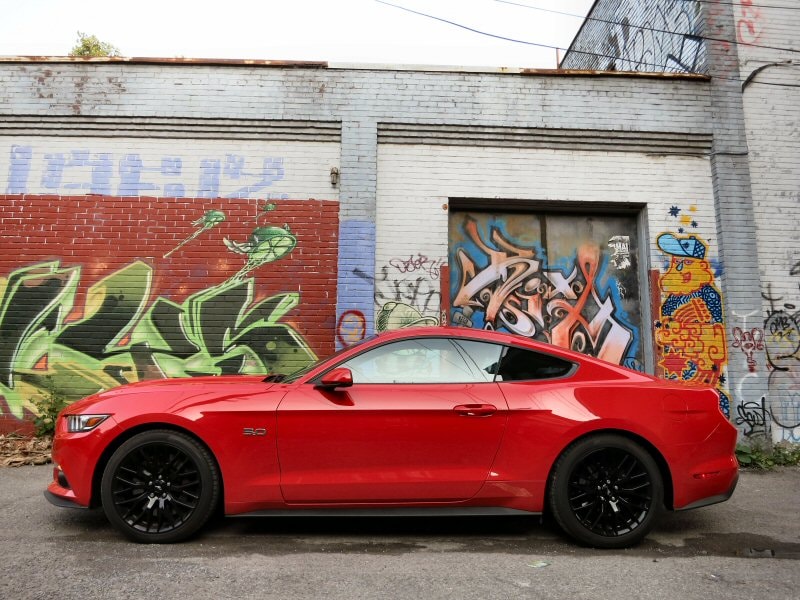
Photo by Benjamin Hunting
The 2015 Ford Mustang Diversifies Its Engine Line-Up
The 2015 Ford Mustang GT still maintains its 5.0-liter V-8 - which has seen its intake and exhaust systems reconfigured to bump horsepower up to 435 and total torque to 400 lb-ft - but the real story for the redesigned car is its new EcoBoost four-cylinder option. The turbocharged 2.3-liter unit in the Mustang provides 310 horsepower and 320 lb-ft of twist, and while I have only had the chance to sample it in other FoMoCo products, it's a deceptively quick motor that is only a second behind the GT's advertised 4.5-second sprint to 60-mph.
Bringing up the rear is the Mustang's once-celebrated, now largely-ignored 3.7-liter V-6. It's still the base engine for the car, and it pumps out 300 horses and 280 lb-ft of torque, but Ford's nixed any kind of optional performance equipment for six-cylinder 'Stangs, forcing speed fans on a budget to opt for the EcoBoost model instead. Each edition of the car can be had with either a six-speed manual or a six-speed automatic transmission.
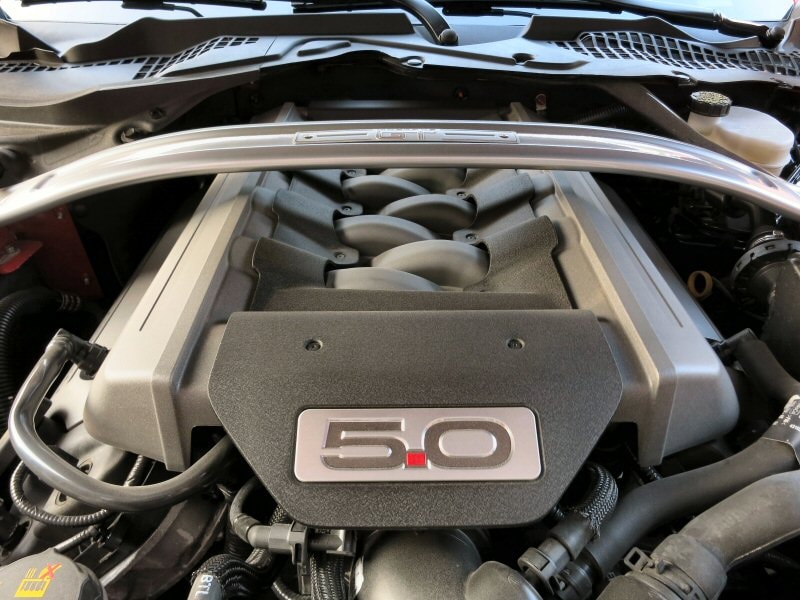
Photo by Benjamin Hunting
The 2015 Ford Mustang Both Loses and Gains MPGs
Further proof that the Ford Mustang's V-6 has fallen out of favor can be found in examining its fuel mileage rating, which has dropped for the current model year while the GT's 5.0 has actually seen a mild increase. Whereas it once touched the 31-mpg mark on the highway, the best you can do now with the 3.7-liter is 28-mpg in steady-state cruising, along with 17-mpg around town.
If you are seeking the optimal balance between forward motion and frugality you're now going to be looking at the EcoBoost model's 22-mpg city and 31-mpg highway. I can't help but wonder if Ford's engineering team didn't specifically saddle the six-cylinder coupe with a rear gear intended to widen the efficiency chasm between it and the turbo four so as to 'enhance' sales of the latter. Either way, if you don't care all that much about the fuel sipping habits of your muscle car, then it won't matter that the 5.0-liter V-8's 16-mpg city and 25-mpg highway mileage (for auto-equipped cars) is slightly down compared to the year before.
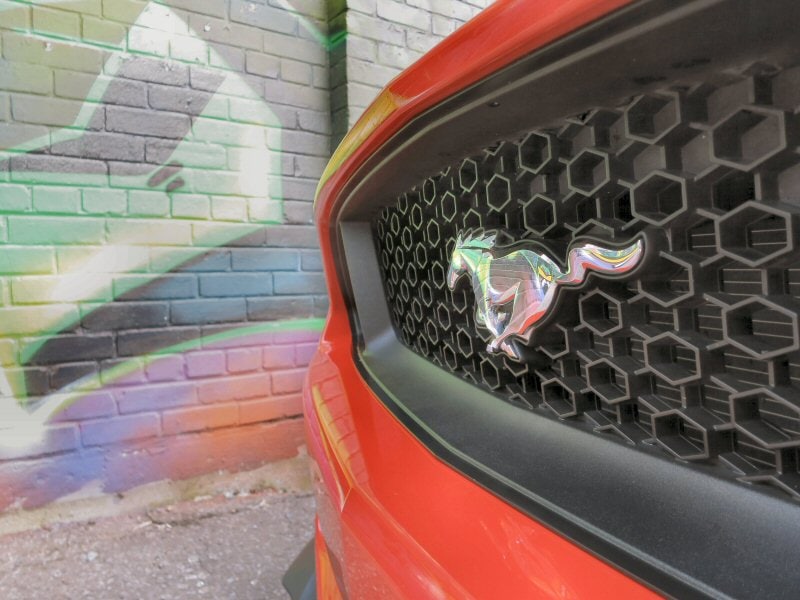
Photo by Benjamin Hunting
The 2015 Ford Mustang Debuts A Spiffier Interior
The Ford Mustang's cabin has typically been an area where designers decided to save a little money, but for 2015 things have brightened considerably - especially if you opt for the metal-look dash trim available with the GT model. The Mustang has seen its entire passenger compartment re-tooled to great effect, with the addition of fun toggle switches at the base of the center stack, a new set of dials and buttons just above it for easy access to climate functions, and a third set of hard controls linked to the stereo system underneath the car's SYNC touchscreen. There's an improved driver's information display to be found in the car's gauge cluster, too, and it's nice enough to make the big tachometer and speedometer that flank it on either side look a little low-rent.
The Mustang's available Recaro seats are kind of a love/hate proposition. They look great, but your body either fits them or its doesn't, because the bolsters are tight to the point where you're likely to join a local gym at the end of a long road trip just to raise your self-esteem. The rear seat is somewhat larger than it was in 2014, but I still wouldn't want to spend any time back there if I was over the age of 12.
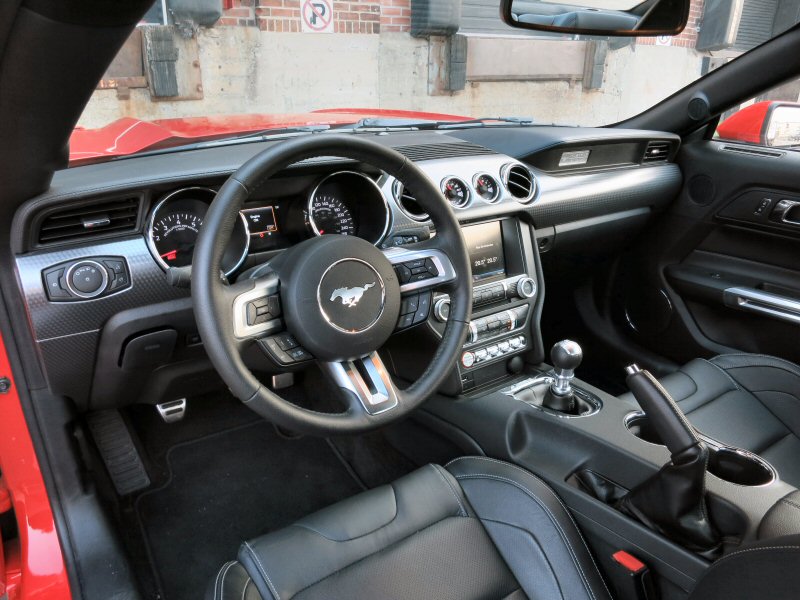
Photo by Benjamin Hunting
The 2015 Ford Mustang Can Be Ordered With A Dazzling Range Of Features
Is it a harbinger of the apocalypse that a vehicle like the 2015 Ford Mustang, once the champion of cheap, basic speed, is now available with an adaptive cruise control system? Not only that, but Ford has seen fit to install advanced gear such as a blind spot monitoring system, the MyKey system (which allows you to limit vehicle speed, stereo volume, and control other features when lending out the car), multi-stage traction and stability control (including a 'full-off' Race mode), and heated and cooled seats. Sure, many of these features have been available in Ford products for a while, but seeing them all come together in the new Mustang really drove home for me how far up-market the car has been pushed since it debuted as a six-cylinder mass-transit option at the 1964 World's Fair in New York City.
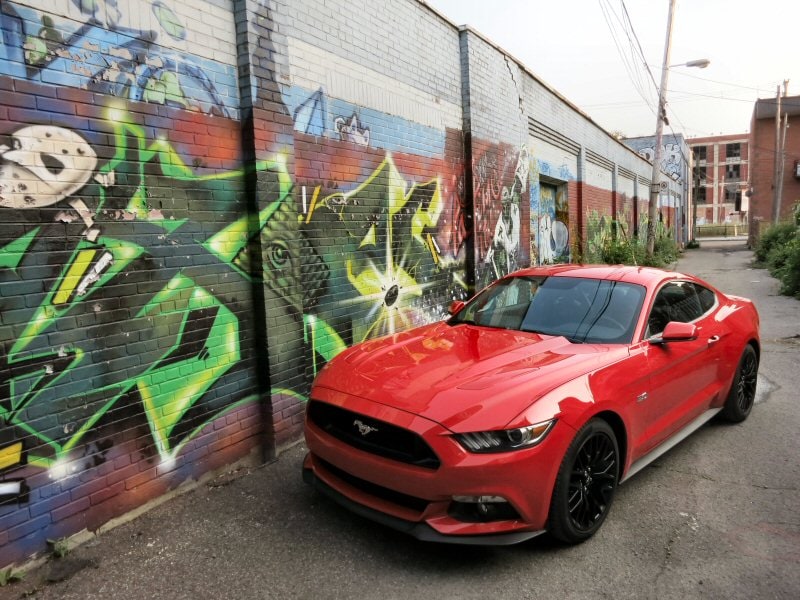
Photo by Benjamin Hunting
The 2015 Ford Mustang GT Delivers Standard Line-Lock
One more feature offered free of charge with the 2015 Ford Mustang GT is line-lock. If you've never been to a drag strip, you're probably unfamiliar with a line-lock system, which clamps down on the front brakes while allowing the car's rear wheels to spin and spin and spin until you've either heated up your drag slicks or melted the tread off of your street tires. There's absolutely no compelling reason to include a line-lock system on a showroom stock car other than the fact that it's a lot of fun to engage in burn-outs at will, so if you have the budget to keep the Mustang GT in rear rubber, you're going to love line-lock (accessible via the Mustang GT's Track Apps menu).
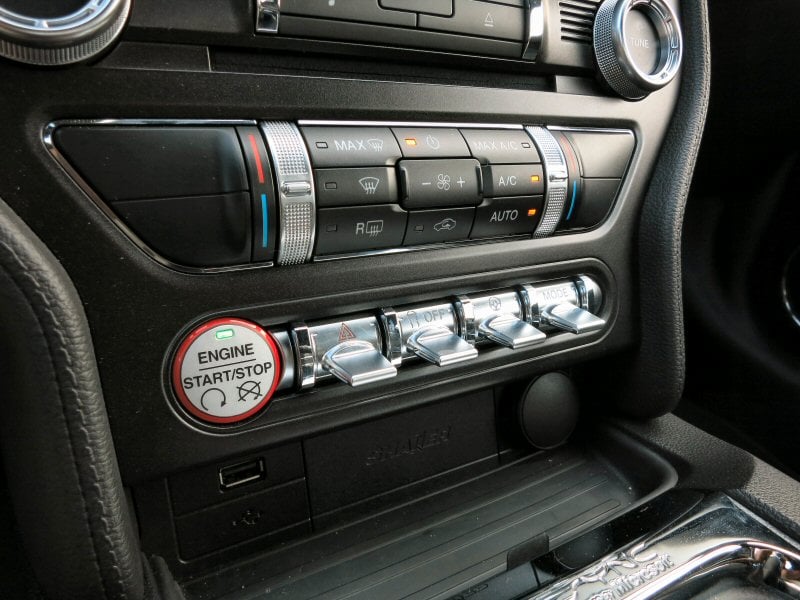
Photo by Benjamin Hunting
The 2015 Ford Mustang Is Cheap Speed Incarnate
Despite the significant engineering effort that's gone into making the 2015 Ford Mustang the most potent version of the car yet (without a Shelby badge, of course), the cost of entry for the brand's most popular performance car is still quite reasonable. If you ignore all of Ford's careful prodding and marketing and choose to stick with the base V-6 coupe, you're looking at a starting MSRP of only $23,800 - not much outlay for access to 300 horsepower. The 310 horsepower, more-efficient EcoBoost that the Blue Oval wants you to buy so badly is only a $1,500 upgrade, which most likely means very few V-6's are going to make it out of showrooms. The Ford Mustang GT's starting MSRP of $32,300 for the fixed-roof edition might be nearly $10k more than the entry-level Mustang, but it's still an incredible value when you consider the power, style, and features that come with the car.
In fact, it's only when you get to the convertible versions of the Mustang that pricing begins to pinch your wallet. The V-6 'vert asks for $29,300, while the EcoBoost drop top jumps to $34,800. The GT convertible's $41,800 MSRP starts to feel like a real stretch when contrasted against the fixed-roof model, particularly given its less-focused ride and handling.
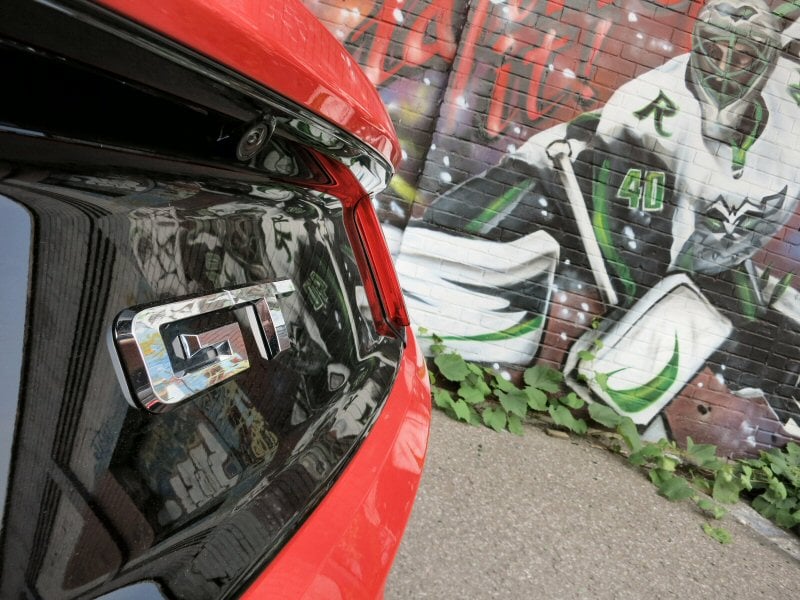
Photo by Benjamin Hunting
Pros / Cons
The 2015 Ford Mustang: Pros / Cons
Pros:
- Unbeatable performance-for-your-dollar
- Aggressive styling
- More comfortable ride thanks to IRS
- Powerful V-8 in GT model
- Balance of speed and efficiency from EcoBoost model
- Long list of advanced equipment and performance gear on offer
Cons:
- GT still drinks gas like it's at its first kegger
- Convertible models much more expensive than coupes
- V-6 has seen its past fuel efficiency neutered
- Back seat is bigger, but still tight
- Launch control system doesn't really help you nail those quarter-mile passes
- I miss the live axle at the drag strip
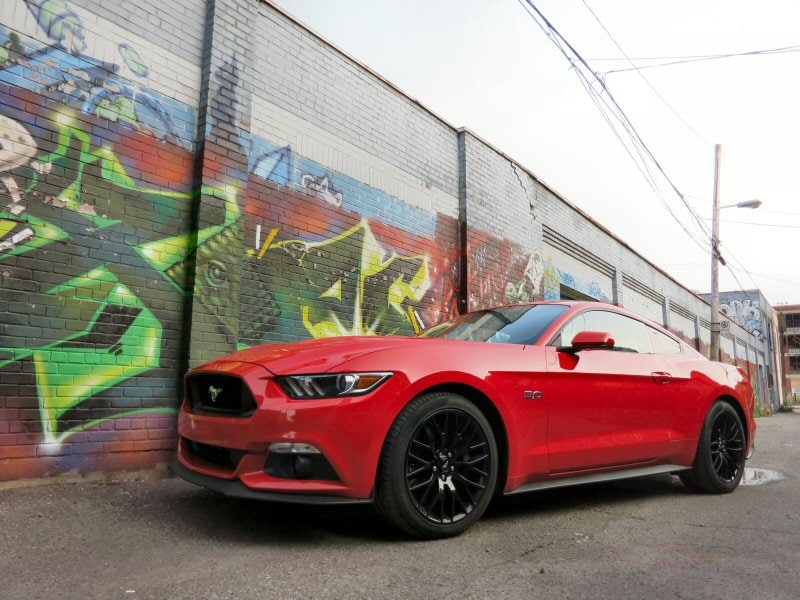
Photo by Benjamin Hunting